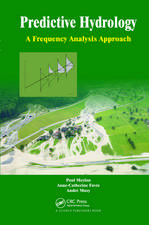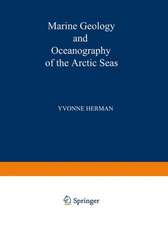Aeolian sand and sand dunes
Autor K. Pye, H. Tsoaren Limba Engleză Paperback – 12 feb 2012
Preț: 395.09 lei
Nou
Puncte Express: 593
Preț estimativ în valută:
75.60€ • 78.78$ • 62.60£
75.60€ • 78.78$ • 62.60£
Carte tipărită la comandă
Livrare economică 03-17 aprilie
Preluare comenzi: 021 569.72.76
Specificații
ISBN-13: 9789401159883
ISBN-10: 9401159882
Pagini: 416
Ilustrații: 416 p.
Dimensiuni: 155 x 235 x 27 mm
Greutate: 0.58 kg
Ediția:Softcover reprint of the original 1st ed. 1990
Editura: SPRINGER NETHERLANDS
Colecția Springer
Locul publicării:Dordrecht, Netherlands
ISBN-10: 9401159882
Pagini: 416
Ilustrații: 416 p.
Dimensiuni: 155 x 235 x 27 mm
Greutate: 0.58 kg
Ediția:Softcover reprint of the original 1st ed. 1990
Editura: SPRINGER NETHERLANDS
Colecția Springer
Locul publicării:Dordrecht, Netherlands
Public țintă
ResearchCuprins
1 The nature and importance of aeolian sand research.- 1.1 Definitions.- 1.2 Previous work.- 1.3 Future research requirements.- 2 The nature of airflow.- 2.1 Physical properties of air and the Earth’s atmosphere.- 2.2 Nature and types of air motion.- 2.3 Storm types that generate sand-transporting winds.- 2.4 Flow in the atmospheric boundary layer.- 3 Characteristics of windblown sediments.- 3.1 General properties of sediment grains.- 3.2 Grain shape.- 3.3 Porosity, permeability, and packing of sands.- 3.4 Grain size characteristics of aeolian sediments.- 3.5 Shape characteristics of aeolian dune sands.- 3.6 Surface textures of aeolian sands.- 3.7 Porosity and permeability of aeolian sands.- 3.8 Sources and mineral composition of aeolian dune sand.- 4 Mechanics of aeolian sand transport.- 4.1 Particle entrainment.- 4.2 Transport of particles by the wind.- 5 The formation of sand seas and dunefields.- 5.1 Definition of sand seas and dunefields.- 5.2 Global distribution of sand seas.- 5.3 Factors controlling the distribution and magnitude of sand seas.- 5.4 Development of sand seas in relation to topography.- 5.5 Wind regime and regional sandflow paths.- 5.6 Evolution of ergs in response to climatic changes.- 5.7 Effect of sea-level changes on coastal dunefields.- 5.8 Effect of sea-level changes on continental dunefields.- 6 Aeolian bedforms.- 6.1 Types of aeolian sand accumulation and bedform terminology.- 6.2 Ripples.- 6.3 Sand dunes.- 6.4 Vegetated dunes.- 6.5 Sand sheets.- 6.6 Summary of factors determining the morphology of aeolian sand accumulations.- 7 Internal sedimentary structures of aeolian sand deposits.- 7.1 Introduction.- 7.2 Internal structures of sand dunes.- 7.3 Secondary sedimentary structures in dunes.- 7.4 Sedimentary structures of interdune areasand sand sheets.- 7.5 Niveo-aeolian deposits and cryogenic structures in cold-climate dunes.- 8 Post-depositional modification of dune sands.- 8.1 Introduction.- 8.2 Denudation by rain splash, surface wash, soil creep, and gullying.- 8.3 Near-surface compaction.- 8.4 Addition of allochthonous components.- 8.5 Weathering and pedogenesis of siliceous dune sands.- 8.6 Formation of carbonate aeolianites.- 8.7 Early diagenetic cementation by evaporite minerals.- 9 Management and human use of sand dune environments.- 9.1 Thermal properties of sand, moisture regime, and vegetation growth.- 9.2 Water courses in dune areas.- 9.3 Control of windblown sand.- 9.4 Human use of sand dune areas.- 10 Aeolian research techniques.- 10.1 Wind tunnel studies.- 10.2 Measurement of sand movement using sand traps.- 10.3 Sand tracer techniques.- 10.4 Methods of sample collection for grain size and mineralogical analysis.- 10.5 Methods of determining the grain size of sands.- 10.6 Characterization of airflow.- 10.7 Methods of monitoring changes in sand dune terrain.- Appendix I. SI units and c.g.s. equivalents.- References.
Recenzii
...the great strength of the book is that it reviews much new research material, and it is frequently almost encyclopaedic in its coverage of the topics it tackles. - Progress in Physical Geography









